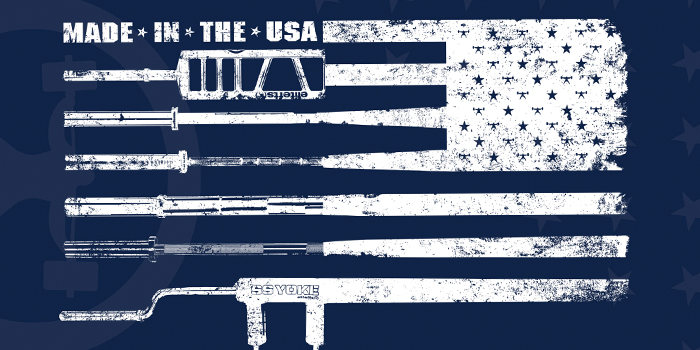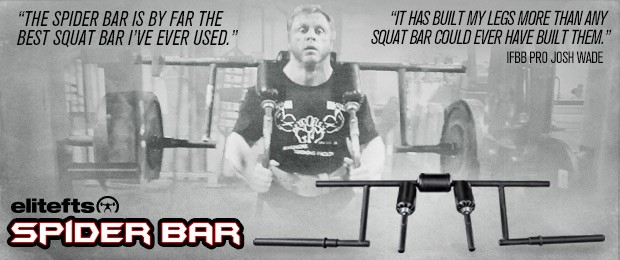
Strength and conditioning in the past 20 years has taken off like a NASA spaceship with new methods, opinions, and equipment. As a coach and competitive powerlifter, I am often asked when to use certain pieces of equipment, variations, and specialty bars. Below is a quick guide on understanding how these bars work. If you hate reading, scroll down and watch the video.
There are three main reasons why you want to implement specialty bars—I'll do my best to keep it brief, so they are easy to remember. The first will more than likely the easiest to remember, which is to attract attention to yourself. Specialty bars are a fantastic way to peak other's interests who are not familiar with the realm of strength, and it increases the chances of being looked at. Next, you'll need to run the conjugate system, so you'll utilize every specialty bar on the market. Lastly, bring everything together by sporting a ridiculous haircut like me, a mohawk, and run the conjugate system while changing bars weekly.
WATCH: How To Properly Use the SS Yoke Bar
Ok, so now that we have all the really important information out of the way, let's take a closer look at specialty bars and explore the REAL reasons you'll want to use them.
Characteristics
Yes, that is correct; specialty bars have very specific traits or characteristics similar to people, which for the most part, will always take effect on individuals that use them unless they learn how to cheat the bar, which we will go over in a minute. We want these characteristics to affect us when we are benching, squatting, or deadlifting in an attempt to pull us out of position. The reason this is good is if we can fight those characteristics while under load, and then take the specialty bars away, transitioning back to a straight bar, this will make our straight bar performance better.
Cheating
If, while using specialty bars, you can manipulate the movement or "cheat" the movement and you find yourself using more weight than you would in a competition, this would be an indication not to use that particular bar any longer. This would suggest there will be no transfer of strength as it is a better lift than what is required for a strength athlete.
Shoulders
The last go-to reason for using specialty bars, in my book, is for shoulder health — lots of individuals in the facility where I coach have beat up shoulders. This is from decades of using nothing but a straight bar and poor movement patterns. Specialty bars have given them the ability and opportunity to continue strength training and progression in all competing movements while rehab is taking place to get back under a straight bar again.
BUFFALO BAR™
The BUFFALO BAR™ has a drastic bow which allows it to conform to the shape of your back while saving the shoulder joint from increased pressure. The characteristics of this bar have a slight wobble when the change of direction takes place. Although it is easier to get under, the wobble tends to be difficult for some. This bar is a fantastic transitional bar from other specialty bars getting back under a straight bar. The largest area of concern with this bar is when it sits on the rack, and weights are being changed, it tends to rotate FAST. I have seen many get smoked in the head while setting up for or finishing a lift.
Safety Squat Bar
The Safety Squat Bar (SSB) is one of the most widely known specialty bars in the industry today. You'll see this in private facilities up to professional organizations training professional athletes. The SSB has probably the best and most well-known padding system, which distributes the weight better across the lower neck upper trap area. This bar is the most popular for squatting with beat up shoulders. The way that it is cut, its main characteristic, is to pull you forward into flexion mimicking BUT NOT REPLACING a front squat. This bar can be flipped around backward and front-loaded to replicate a front squat closer for those that struggle with a proper front rack shoulder position or have issues with passing out. There are several ways on how NOT to use this bar that I cover here.
Rackable Cambered Bar
This bar sucks, especially when you attempt to walk out a squat. We will say that the characteristic of this bar is "sassy." The reason I say that is because the bar always has something to "say" as it oscillates constantly. Changing direction with this bar creates instability, so the quicker changes of direction here will not be helpful for many. There are roughly five different hand positions that can be taken with this bar, depending on how beat up your shoulders are: 1. Start low and out on the horizontal camber, 2. Low and in the middle with your hands partially on the horizontal and vertical camber, my position of choice, 3. Low and entirely on the vertical camber, 4. High on the vertical camber, 5. And the hardest position on the upper horizontal blower of the bar, which will be where a straight bar would sit, allowing the most oscillation possible (the hardest to fight). Things to be worried about when using this bar is in a rack with a lower hand position during rerack—your hands can get smashed badly!
Spider Bar
The Spider Bar is the last of the common specialty bars that you will see in the gym. It is unholy matrimony of a rackable cambered bar and safety squat bar. Unlike the continual oscillating of the cambered bar, this particular bar creates two distinct movements while going through your squat pattern. Typically, after a change of direction, you will be pulled forward hard then thrown back hard before the bar USUALLY calms down. Under heavier loads, this bar brings to light weak anterior or posterior muscle groups based on the abrupt changes of direction. If weaker anteriorly, you will find that you will fall backward more often as you cannot fight the backward pull. If weaker posteriorly, you'll collapse forward more often than not.
So, there you have it, a quick coaching guide on the characteristics of specialty squat bars and what to watch out for. Ramp the difficulty through squat variations by way of stance, box implementations, and tempo variations. If you have any questions, leave a comment below. Search #MohawkMethod to see many of the variations above.










